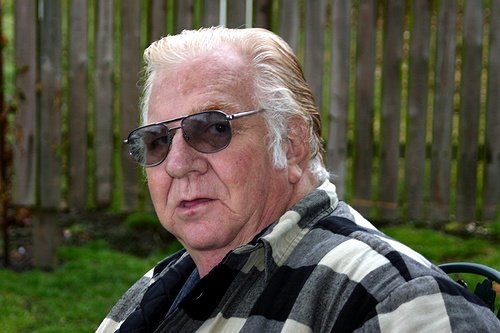Albany, NY - September 18, 2014 - Governor Andrew M. Cuomo today announced an additional $106 million in funding for the Vital Access/Safety Net Provider Program, which supports healthcare services for New York State’s elderly and low-income populations. The funding will go toward projects at facilities specifically chosen because they are struggling financially.
“Ensuring that all New Yorkers have access to quality healthcare is one of our highest priorities, and with this funding the state is stepping in to bolster organizations that provide for New Yorkers in need,” Governor Cuomo said. “This money supports healthcare services for the elderly and low-income families – two groups that may otherwise lack proper care – and the work that it supports will ultimately lead to healthier New Yorkers in communities all across the state.”
These funds will be used primarily to improve community care and to achieve defined financial, operational, and quality improvement goals related to the integration or reconfiguration of services offered by the facility. Specific examples include:
- Expanding access to ambulatory services through additional needed services or added hours of operations
- Opening urgent care centers to help reduce use of emergency rooms
- Improving quality through reduced adverse events, which reduces overall costs
- Expanding services in rural areas through additional primary and specialty care services
- Establishing care coordination between providers and levels of health care service delivery
- Providing more effective services that meet the needs of the community
The state Department of Health works with all of the awarded facilities to establish goals that measure the program’s success, and identify financial, operational, and quality metrics to track progress toward these goals. The program was established by the Medicaid Redesign Team and to date, the program has awarded $324 million in funding.
A breakdown of facilities receiving funding for 2014-15 is below:
|
Provider |
Type |
2014-15 |
|
CINERGY Collaborative |
Nursing Homes |
$55,000,000 |
|
Severely Financially Distressed Providers |
All |
$20,000,000 |
|
Mount Sinai Hospital Groups |
Hospitals |
$15,000,000 |
|
Neurodegenerative Disease Centers for Excellence |
Nursing Homes |
$5,000,000 |
|
Critical Access Hospitals |
Hospitals |
$5,000,000 |
|
South Nassau Hospital |
Hospital |
$3,000,000 |
|
Maimonides Medical Center |
Hospital |
$2,500,000 |
|
Total |
$105,500,000 |
The CINERGY Collaborative includes a group of more than 45 not-for-profit post-acute care organizations serving vulnerable populations in the counties of New York, Bronx, Queens, Kings, Richmond, Westchester, Duchess, Nassau and Suffolk. Collaborative members will achieve financial, efficiency, and quality objectives through participation in initiatives focused on shared services and administrative streamlining; health insurance cost containment; collaboration in an IPA model to facilitate managed care contracting and deployment of common clinical and utilization management practices; and enhancement of workforce safety, wellness, and effectiveness.
Severely Financially Distressed Providers includes funds to be allocated for struggling providers in financial distress. The Department continues to develop plans to assist providers with financial recovery.
Mount Sinai Hospital Groups includes Mt. Sinai and St. Luke’s-Roosevelt hospitals, Beth Israel Medical Center, and New York Eye and Ear Infirmary, with practices across the boroughs of New York City, Westchester and Long Island. The funding will be used to protect and enhance access to care and quality of care; expand primary and preventive care; reduce preventive quality indicator related admissions; and reduce inappropriate use of emergency department.
Neurodegenerative Disease Centers for Excellence includes several nursing homes specializing in Huntington’s disease and other degenerative diseases. Neurodegenerative disease is an umbrella term for a range of conditions which primarily affect the brain. This proposal attempts to address this population in a coordinated manner and develop the dedicated Centers for Excellence in Neurodegenerative Disease to allow patients to be treated in New York State.
Critical Access Hospitals funding will be allocated among the 17 critical access hospitals in New York State:
- Carthage Area Hospital Inc. (Jefferson County)
- Catskill Regional Medical Center – Hermann (Sullivan County)
- Clifton-Fine Hospital (St. Lawrence County)
- Community Memorial Hospital Inc. (Madison County)
- Cuba Memorial Hospital Inc. (Allegany County)
- Delaware Valley Hospital Inc. (Delaware County)
- Elizabethtown Community Hospital (Essex County)
- Ellenville Regional Hospital (Ulster County)
- Gouverneur Hospital (St. Lawrence County)
- Lewis County General Hospital (Lewis County)
- Little Falls Hospital (Herkimer County)
- Margaretville Hospital (Delaware County)
- Moses-Ludington Hospital (Essex County)
- O'Connor Hospital (Delaware County)
- River Hospital (Jefferson County)
- Schuyler Hospital (Schuyler County)
- Soldiers And Sailors Memorial Hospital Of Yates County (Yates County)
South Nassau Hospital’s award is for the restructuring of its Long Beach site, and to provide emergency department services and other ambulatory services.
Maimonides Medical Center’s award will be used to enhance the availability of healthcare services in Brooklyn, assist their efforts to partner with other healthcare organizations, lay the groundwork for a successful DSRIP initiative and develop a model of care known as Community Care of Brooklyn.
The Department continues to work with all the awarded facilities to establish goals to measure success of the program and to identify metrics to track progress toward these goals.
Photo by Kenn Kiser via Free Images










